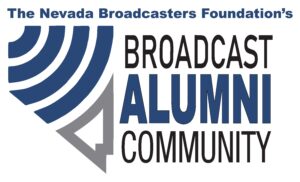
November is a month where there are no regularly scheduled regulatory deadlines. But the big question for broadcasters may be whether the FCC will continue to function throughout the month. The last-minute continuing resolution passed by Congress on September 30 extended federal government funding through November 17 – which again raises the possibility of a federal government shutdown beginning in late November if Congress does not approve new funding measures for Fiscal Year 2024 by that date. As we discussed in our previous article regarding October Regulatory Dates for Broadcasters, if a government shutdown does occur, the FCC and other government agencies may have to cease all but critical functions if they do not have any residual funds to continue operations. In late September, the FCC announced that it had sufficient leftover funds to keep operating for about two weeks after a shutdown. We do not know if those funds are still available, so we need to be watching to see what happens between now and November 17.
Assuming that there is no shutdown, there are a number of other dates that broadcasters should be watching. All broadcasters need to remember that November 20 is the deadline to file their ETRS Form Three to provide more detailed information regarding their stations’ performance during the October 4 Nationwide EAS Test. See our article here regarding this year’s EAS test and broadcasters’ reporting obligations. This deadline is important for many reasons – not just to avoid potential penalties for missing the filing deadline, but also to demonstrate broadcasters’ commitment to the emergency communications system as broadcasters’ role in that system is the principal reason for Congress to be presently considering the bill to require AM radio in every car. See our article here for more on the importance of accurate reporting.
Another very important date in the coming month is November 29 when TV broadcasters holding Broadcast Auxiliary Service (BAS) licenses (e.g., Studio Transmitter Links/ ENG) in the 12.7-13.25 GHz (12.7 GHz) band must file a certification to protect their operations or to entitle them to reimbursement should they have to make technical changes, as the FCC is considering repurposing parts of this spectrum for wireless users. By November 29, with limited exceptions, broadcasters holding a licensee band must certify to the FCC that the information on the license is accurate and that their facilities are operating as authorized. If the information is not accurate, a broadcaster must file a modification to update the FCC records with the correct information by the November 29 deadline. More information on the certification requirements and filing procedures is available in the FCC’s August 2023 Public Notice. We wrote more about the certification requirement here.
On the subject of spectrum used by broadcasters being repurposed for wireless uses, November 8 is the deadline for comments on the FCC’s Wireless Telecommunications Bureau’s Public Notice on the proposed deadlines for the submission of reimbursement claims by earth station operators affected by the C-band transition. The goal is to conclude the reimbursement program by the current target of June 30, 2025. Comments are sought on these deadlines proposed by the Bureau:
- February 5, 2024 – For all reimbursement claims for costs incurred and paid by claimants as of December 31, 2023, including all lump sum election claims by incumbent earth station operations.
- September 30, 2024 – For all reimbursement claims for costs incurred and paid by claimants after December 31, 2023, which must be submitted on a rolling basis within 30 days of being incurred.
Other November dates to watch include a November 2 workshop by the FCC’s Wireless Telecommunications Bureau on the environmental compliance and historic preservation review process required for the construction of communications facilities supporting FCC licensed services. The workshop will include information relevant to the construction of new communications towers and the collocation of equipment on existing towers and other structures – including requirements for Antenna Structure Registration. While the workshop is targeted at wireless providers, the workshop will include discussions of topics such as the FCC’s environmental and historic preservation rules and procedures, coordination with Tribes during the National Historic Preservation Act (NHPA) process, and compliance with the Endangered Species and Migratory Bird Treaty Acts, all relevant to broadcast tower construction. The workshop is open to the public, and interested parties may email the FCC at fccenvironmentalworkshop@fcc.gov to participate in the live workshop. The workshop will also be recorded and publicly available at https://www.fcc.gov/news-events/events/archived after the event.
Daylight Savings Time ends on November 5, and thus AM daytime-only radio stations and stations operating with pre-sunrise and/or post-sunset authority should check their sign-on and sign-off times on their current FCC authorizations to ensure continued compliance with the FCC’s rules. Please note that all times listed in FCC licenses are standard time.
November 29 is the filing deadline for reply comments in response to the Copyright Office’s Notice of Inquiry regarding the copyright issues triggered by the use of AI, including the question of whether machine-generated content is entitled to copyright protection and the copyright implications of AI’s use of copyrighted materials (including books and music) to “learn” how to perform certain tasks.
Looking to December, as we recently reported, the LPFM Filing Window, originally scheduled for November 1 through 8, has been rescheduled to December, and will now open at 12:01 am EST on December 6, and close at 6:00 pm EST on December 13. The current freeze on the filing of applications for changes in the facilities of FM translators and existing LPFM stations will also now end on December 13. We wrote more about the LPFM window’s rules and the filing freeze here.
December 1 is also the deadline for the filing of Biennial Ownership Reports by all full-power and LPTV licensees. These reports not only detail ownership and control of broadcast stations, but also report on the race and gender of station owners, and their other broadcast interests (see our article from 2021 about the importance the FCC attaches to these filings). Each individual and entity who has an interest in your station needs to obtain its own FCC Registration Number (FRN) which needs to be used in the reports for all stations in which that individual or entity has any interest. Additional reports also need to be filed for each entity that has an attributable interest in any licensee. The process of preparing these reports can take time (e.g., you need the social security number for all individuals with interest in commercial licensees and the Employer Identification Number for all entities – see this article for special rules for certain board members of noncommercial licensees), so you should not wait until the last minute to try to complete these reports as you may not meet the deadline.
Finally, December 12, 2023 is the deadline for EAS equipment software changes required by a 2022 FCC Report and Order where the FCC required EAS Participants, among other things, to prioritize EAS alerts transmitted in the Common Alerting Protocol (CAP) rather than those transmitted through the over-the-air “daisy chain” system, given the4ir superior audio quality and the ability to transmit more information (see our article here). The Report and Order stated that EAS equipment suppliers indicated that changes to prioritize CAP alerts and to revise and remove certain test codes “can be accomplished via software updates” to EAS equipment in tandem with “regularly scheduled maintenance activities” involving minimal cost and effort on the part of EAS manufacturers and participants. Broadcast stations should confirm with their EAS vendors that their EAS equipment software and firmware will comply with the new EAS rules no later than December 12, 2023.
As always, this list of dates is not exhaustive. Also note that deadlines can change – especially in light of the potential for another government shutdown in late November. Always review these dates with your legal and technical advisors, and note other dates not listed here that may be relevant to your operations.
Courtesy Broadcast Law Blog


